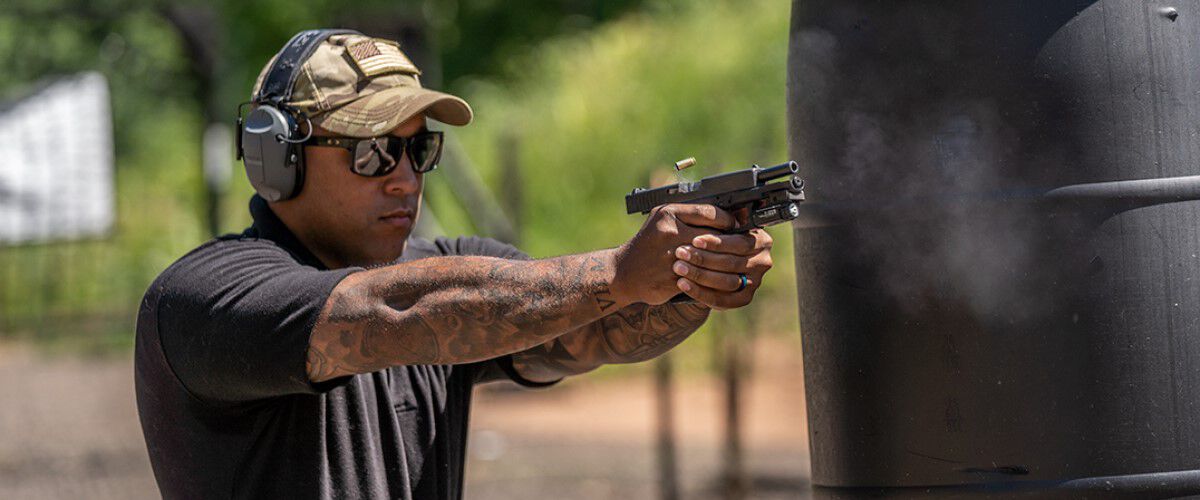
I was at the local range when I struck up a conversation with a couple recent firearm converts. Both noted self-protection as the reason for their new Glock 19s. They had completed a training course and were concealed-carry certified. The problem: they didn’t make the most of their range time. Each shot 50 rounds and most of those were pointless. They spent no time working on their grip, pressing out, performing mag changes or doing any actual shooting drills. Instead, they pretended they were in an action movie.
This is not the way to get started. I tapped two tactical experts for guidelines you can follow to not just shoot, but truly train.
Draw, Press & Shoot
George Walker is a former Marine, veteran police officer, and current SWAT Team Leader. It’s safe to say he knows a thing or 10 about performing under pressure. He believes one of the best drills to practice at the range is the simple draw, press and shoot.
LAWMAN HANDGUN CLEANFIRE TRAINING
Speer® Lawman® Clean-Fire® ammunition gives shooters ideal indoor options. These offerings use the patented Clean-Fire primer, which contains no lead, barium or antimony. The TMJ® bullet's lead core is completely encased so powder gases can’t burn lead off the bullet base.
Buy Now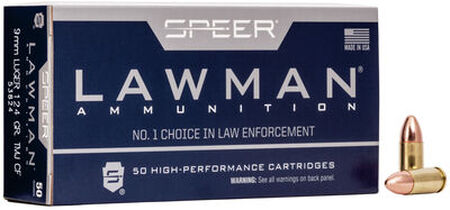
“You need to be efficient at getting to your weapon, obtaining a solid grip, and then firing that weapon,” Walker says. “How you plan to carry should dictate how you go about the drawing process. Don’t draw from a hip holster set at the 9 o’clock position if you plan to carry your firearm in a purse or use an appendix carry. Practice how you plan to carry. Also, don’t just practice shooting. You can be super accurate, but that will do you zero good if you can’t get to your weapon during crunch time.”
He notes that practice sessions shouldn’t be rushed. He recommends slowing everything down and taking your time.
"Don’t get in a hurry. Talk yourself through the draw and press out process. Establish a firm grip and press out slowly. Then, settle your sights and fire a round. Please take a second to evaluate how it went. Repeat the process multiple times, and each time you should get a little faster. Have a shooting partner film you on a smartphone and then watch the footage back. Is there a place in the process where something is breaking down? You should constantly be evaluating.”
Shoot On The Move
Hitting a target while standing still is one thing, but putting lead center mass while on the move is another. Doing this is not as easy as it looks in a movie. It takes time and a no-quit attitude.
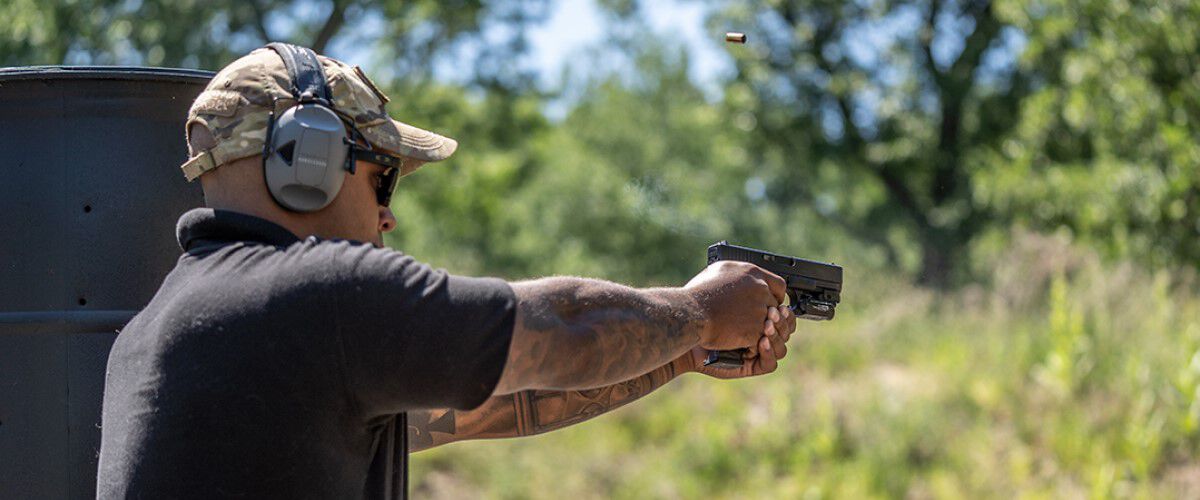
If possible, practice moving shots on a steel target. Steel is reactive, and you will know when you press the trigger if your round hits home or not. From there, practice your draw and press out, and then walk through the aiming process while moving forward and back and left and right. Do this several times before you fire a round. Once you start shooting on the move, don’t get stuck in a routine and do the same thing each time. Put multiple shots on target while moving forward. Then stop, reholster, draw, press out and resuming firing while moving to the left. Each time, you should fire multiple shots while on the move. Now, take a break. Slug some water and then resume. Only this time, start by firing while moving backward, then forward, and then while on the move to the right.
Two Shots & Scan
Should you find yourself in a gunfight, you don’t want to send lead aimlessly. You might find yourself in an area where putting a round off target or shooting for no reason could injure an innocent bystander. A great way to avoid this is the two shots with a scan drill.
Start five to 10 yards from a target, depending on your comfort level. I recommend starting close at first and then working back. Perform your draw and press out, settle your sights and put two immediate rounds on target. Then, with your handgun still pointed at the target, scan the area. Knowing you need to scan the area helps with follow-through and trains the mind to always be accessing the threat in a self-defense situation.
Tap, Rack & Bang
This may not be the most fun drill in the world, but it is essential. If you press your trigger in a gunfight and the weapon doesn’t go boom, you need to be able to keep your head and fix the problem in a hurry.
Load a few dummy rounds as well as live rounds into a few different magazines. Load the dummy rounds randomly and never have them as the first or last round in the magazine. One of the best ways to perform this drill is to have a shooting partner load the magazine, so you have no idea when a click will occur.
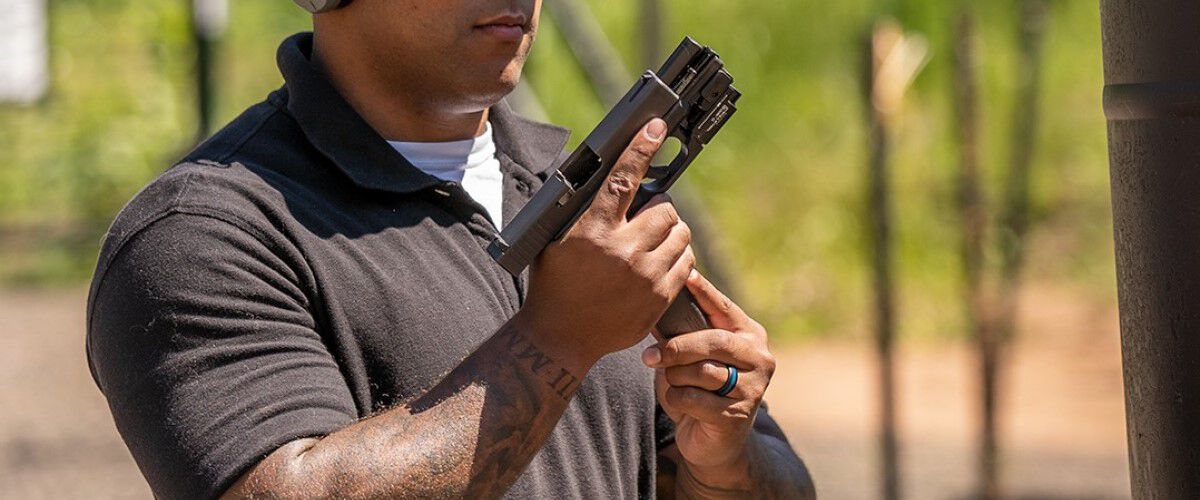
Next, from the low, high-ready or your decided carry position, follow your developed routine and fire the weapon until you get a click. When it happens, tap the bottom of the magazine with the palm not gripping the handgun. This tap should be forceful. Don’t be afraid to bang on the magazine’s base with the palm. Then, using the same hand, bring that hand over the top of the slide and aggressively rack the slide to the rear, and let it return. This should be done with the firearm pointed in a safe direction and still toward the target. Resume firing until you get to the next click, and then repeat the process.
While drilling, keep in mind that the handgun you choose might not be the right one for you. If you’re constantly hanging up on a drill or can’t reach maximum proficiency, it could be time to try a different handgun. Former Army Ranger and sniper Jim Gilliland has forgotten more about practical self-defense handgun training than most will ever know. He notes that many shooters are using a handgun that is too much for them in terms of recoil, or one that doesn’t fit them properly.
TMJ HANDGUN BULLET
Unlike conventional FMJ bullets that leave lead exposed at the base, Speer® TMJ® uses Uni-Cor® technology to completely encase the lead core in a seamless jacket. It’s cleaner, more accurate and more consistent than any FMJ.
Buy Now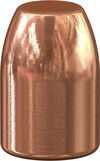
“You’re doing your due diligence,” Gilliland says. “You’re drilling at the range and practicing often, but things aren’t going in your favor. Your immediate thought is that you’re the problem. This isn’t always the case. You need to find a handgun that fits you properly and performs in such a way that fills you with shooting confidence. Firearms hold their value very well. If you’re struggling with your handgun in any way, consider selling it and making a switch.”